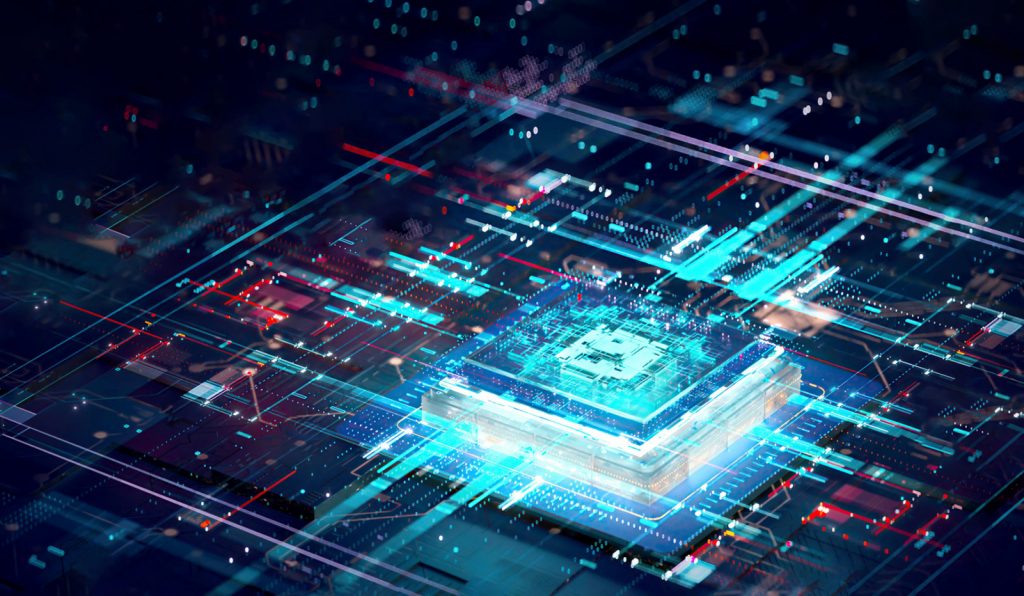
In the ever-evolving world of technology, the pursuit of faster and more efficient computing has been a driving force behind innovation. In recent years, a promising candidate has emerged on the horizon: optical computing. Leveraging the properties of light and optics to process information, optical computing holds the potential to revolutionize the way we solve complex problems and handle data. In this article, we’ll explore the latest developments in optical computing and how they may shape the future of computing.
The Fundamental Difference
To understand optical computing, it’s essential to grasp the fundamental difference between optical and traditional electronic computing. Traditional computers rely on electrical signals, which are limited by factors such as resistance and heat generation as data moves through wires and transistors. In contrast, optical computing uses photons, which are massless particles of light, to carry and process information. This shift from electrons to photons brings several advantages.
- Speed: Photons travel at the speed of light, significantly faster than electrons. This inherent speed advantage holds the promise of blazingly fast computations.
- Energy Efficiency: Unlike electrons, photons do not generate heat while in motion. This means optical computing has the potential to be highly energy-efficient, reducing the power consumption associated with traditional electronic computing.
Recent Advances in Optical Computing
- Optical Logic Gates: Researchers have made significant progress in developing optical logic gates, the building blocks of optical computing. These gates can perform logical operations using photons instead of electrons. This development is a crucial step toward building practical optical processors.
- Photonic Integrated Circuits: Photonic integrated circuits (PICs) are analogous to electronic integrated circuits but use light to process information. Recent advancements have led to the development of more compact and efficient PICs, making them suitable for various applications, including data centers and telecommunications.
- Quantum Optical Computing: Quantum optics, a branch of optical computing, explores the quantum properties of light to perform complex calculations. Quantum optical computers have the potential to solve problems that are currently intractable for classical computers, such as simulating the behavior of molecules or optimizing complex systems.
- Holographic Computing: Holographic computing is an exciting concept where information is stored and processed in three dimensions using light interference patterns. Researchers are working on creating holographic memory devices and processors that could offer massive storage capacities and parallel processing capabilities.
Applications of Optical Computing
The potential applications of optical computing are vast and diverse:
- Data Centers: Optical computing can greatly enhance the speed and energy efficiency of data centers, where massive amounts of data are processed and stored.
- Artificial Intelligence: Optical computing can accelerate AI training and inference, enabling faster and more capable machine learning models.
- Cryptography: The inherent security of optical systems can make them valuable for encryption and secure communications.
- Scientific Research: Optical computing can significantly speed up simulations and data analysis in scientific research, from astrophysics to drug discovery.
Challenges and Future Prospects
While optical computing holds immense promise, it also faces several challenges:
- Integration with Electronics: Integrating optical and electronic components remains a challenge. Developing hybrid systems that combine the best of both worlds is an active area of research.
- Scalability: Building large-scale optical computing systems with a sufficient number of optical components can be complex and expensive.
- Error Correction: Overcoming photon loss and noise in optical systems is crucial, especially for quantum optical computing.
In conclusion, optical computing is at the forefront of technological innovation, offering the potential for breakthroughs in speed, energy efficiency, and problem-solving capabilities. While significant progress has been made, there are still hurdles to overcome. As researchers continue to explore the possibilities of optical computing, we can expect to see exciting developments that will shape the future of computing and transform the way we process information. The light of optical computing is shining brightly on the horizon, and its impact on our world is poised to be truly illuminating.


